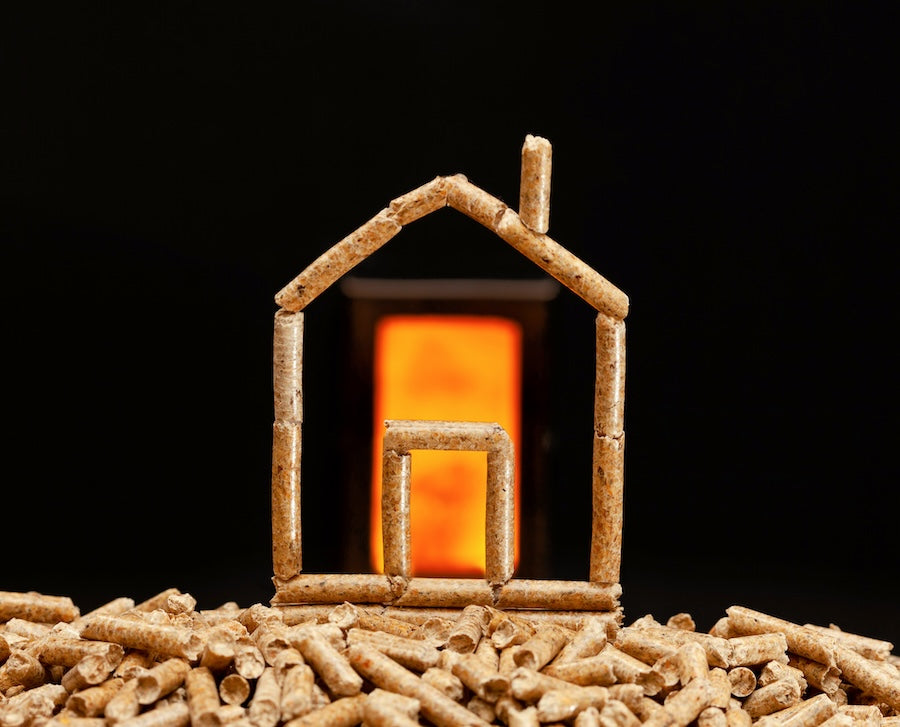Think about the last time you cranked up the heat to shake off the chill of a Canadian winter or a cold spell in the US Midwest.
Now think about the energy that takes, not just to warm the house but also to heat the water for your morning shower or evening bath. Energy efficiency is a topic that hits home for you and many others, especially when the cold months roll around or when the energy bill lands in your mailbox.
As prices creep up and the climate tosses us more surprises, finding ways to save energy isn't just about keeping costs down—it's about a sustainable future. That's where systems like ThermoDrain come into the spotlight.
A marvel in the world of energy-saving technologies, ThermoDrain captures the warmth from used water and gives it a second life. It's smart, it's simple, and it's been changing the game in homes across North America where cutting down on energy use is as welcome as a warm summer's day.
Understanding Heat Exchange: The Basics
Heat exchange is one of those phenomena constantly happening around us, often without us giving it a second thought. It's the natural process of heat moving from one place to another, and it's happening in your home, in your car, and even in your fridge. Yet, when harnessed correctly, this everyday marvel can become a cornerstone of energy efficiency in your home.
Here’s the lowdown: a heat exchange system like ThermoDrain takes the heat from the hot water that's going down your drain—after a shower, for example—and uses it to preheat the cold water heading into your water heater or straight to your shower. It's like getting a helpful push on a swing; that initial oomph makes the whole process easier. In this case, less energy is required to heat your water to the desired temperature because it's already partway there.
Why is this valuable for energy efficiency?
Because heating water is a hungry energy consumer, and anything you can do to take a bite out of that consumption can lead to less energy used. To put it simply, less energy used means more money stays in your pocket. Plus, every bit of energy you save means one less bit of demand on the resources we all rely on. It’s a win-win for everyone.
Anatomy of a ThermoDrain: Components and Functionality
At the core of ThermoDrain is the heat exchanger itself, a copper coil known for its excellent thermal conductivity. Wrapped around the drainpipe, it becomes the stage where the heat transfer dance takes place. But what makes the copper coil tick? Its design is a product of meticulous engineering, tailored to capture as much heat as possible from the wastewater without obstructing the flow. Water from your bath or dishwasher flows down the drain, hugging the pipe, and the heat it carries is absorbed by the coil. This heat then radiates into the cold water supply that's been rerouted to pass through the ThermoDrain system.
What's more, ThermoDrain is built to withstand the diverse and sometimes harsh climates, whether it’s the freezing temperatures of a Prairie winter in Canada or the varying climates across the United States. It’s robust enough to handle the freezing temperatures of a Prairie winter and the humidity of an East Coast summer. This resilience ensures that the system remains effective year-round, providing consistent energy savings regardless of the weather outside.
Add to this the non-intrusive nature of ThermoDrain's installation. It's designed to slot into your home without demanding significant changes to your existing plumbing infrastructure. The ease of integration is a nod to the practicality of its design, making ThermoDrain a suitable choice whether you're retrofitting an older home or installing it in a new build.
The Heat Exchange Process in Action
Now, let's dive into the heat exchange process and see ThermoDrain in its element. The story begins with hot water going down your drain, carrying with it the energy from your water heater. As it travels, the wastewater comes into contact with the ThermoDrain's copper coil, which embraces the drainpipe tightly.
Here’s where the performance peaks. The coil absorbs the heat from the wastewater, and transfers it to the cold water that's passing through the coil in the opposite direction. This pre-warmed water then heads straight to your water heater, which now doesn't have to work as hard to reach the set temperature.
The result? Your water heater uses less energy, and you use less hot water to begin with since it’s already warmed up to a degree.
This process may sound straightforward, but the technical aspects that maximize its efficiency are anything but simple. The design ensures that there's maximum contact between the hot wastewater and the copper coil, allowing for the best possible heat transfer. Moreover, ThermoDrain systems are fine-tuned to cater to typical water usage patterns and temperatures in Canadian homes, ensuring that the heat recovery is optimized for your specific needs.
What this means for you is a smoother ride to energy savings. Every time you shower or wash dishes, ThermoDrain is hard at work, saving energy without you having to lift a finger. It's an elegant solution, sculpted by the hands of science, to keep your home running efficiently and sustainably.
Assessing ThermoDrain’s Efficiency: Technical Metrics and Performance
When it comes to understanding the efficiency of a ThermoDrain system, there's a whole suite of technical metrics that come into play. These metrics give us the full picture of just how much energy you're saving and the performance you can expect.
One key figure is the Coefficient of Performance (COP), which measures the ratio of useful heating provided to the energy consumed. The higher the COP, the better, and ThermoDrain systems boast impressive numbers, offering you peace of mind that you're choosing top-tier efficiency.
But let's talk about real-world impact—what does this mean for your home? In terms of energy savings, implementing a ThermoDrain can reduce your hot water heating costs significantly. Studies have shown that you can expect to see a reduction of energy use for water heating by up to 25-35%, numbers that reflect ThermoDrain's ability to capture a substantial amount of otherwise lost heat. These aren't just abstract percentages; they translate into real savings on your energy bills and contribute to a reduced environmental footprint for your household.
Performance benchmarks vary depending on factors like local climate, home size, and water usage patterns. Still, ThermoDrain has been consistently reliable across a range of conditions, ensuring that energy savings are maintained. It's this sort of adaptability and reliability that sets ThermoDrain apart - a solid performer in the science of saving energy.
Installation and Integration: Technical Considerations
When you're thinking about embracing the energy-saving prowess of ThermoDrain, the installation process is likely one of your top considerations. The good news? ThermoDrain is designed for smooth integration into your existing plumbing system.
Whether it’s during a new home build or as part of a retrofit for energy efficiency improvements, the installation is straightforward for experienced professionals.
The technical considerations begin with an assessment of your current plumbing layout - where your hot water usage is highest, and how the wastewater pipes align with the incoming cold water supply. This preliminary step ensures that ThermoDrain is positioned for optimal heat recovery. Next, considerations around the diameter of your drain pipes and the length of the copper coil come into play, as these factors directly impact the system's efficiency. The design of ThermoDrain is such that it can be adapted to a wide range of home sizes and layouts.
What you need is a qualified plumber, someone well-versed in the nuances of your country's plumbing standards, to handle the installation. They'll ensure that ThermoDrain is fitted correctly and safely, with the heat exchanger, in line with code requirements, and ready to start saving energy from day one. Once installed, you'll be hard-pressed to notice a difference in your daily water use—but you'll certainly see the difference when it comes to energy consumption.
Maintenance and Longevity: Ensuring Sustained Performance
When you're considering a new system like ThermoDrain for your home, you're probably curious about what it takes to keep it running smoothly. The allure of ThermoDrain doesn't just lie in its initial energy-saving capabilities; it's also in its impressive longevity and minimal maintenance requirements.
The robust design and construction of ThermoDrain mean that once installed, it requires very little attention from you, letting you focus on the more enjoyable things in life.
To keep ThermoDrain operating at its best, an occasional check to ensure no debris is obstructing the flow or affecting the heat exchange efficiency is all that's typically needed. This straightforward maintenance task ensures that the system maintains its optimal performance for heat recovery, year after year. And because the materials used in ThermoDrain, like copper for the heat exchanger, are selected for their durability, you won't find yourself needing to replace parts frequently—or at all.
What you end up with is a system that not only provides immediate energy savings but also stands the test of time, contributing to long-term home efficiency. This is a key point for those of you looking to make sustainable choices that won't necessitate future updates or overhauls.
The Impact of Heat Exchange on Residential Energy Consumption
As we wrap up our technical tour of ThermoDrain, it's time to zoom out and look at the bigger picture - the impact of heat exchange on residential energy consumption.
Implementing ThermoDrain systems across the country presents an opportunity to make a substantial dent in the energy demand of today's homes. And when you're battling the kind of winters we get here, that's no small feat.
The heat exchange technology of ThermoDrain, quietly working behind the scenes in homes, has the potential to significantly reduce national energy consumption, especially when used widely. This is important because residential energy use is a sizable chunk of the overall energy pie.
By tapping into the unused energy going down our drains every day, ThermoDrain helps decrease the amount of energy we pull from the grid, which can lead to a lower national carbon footprint and bring us closer to our environmental goals.

















No comment yet, add your voice below!